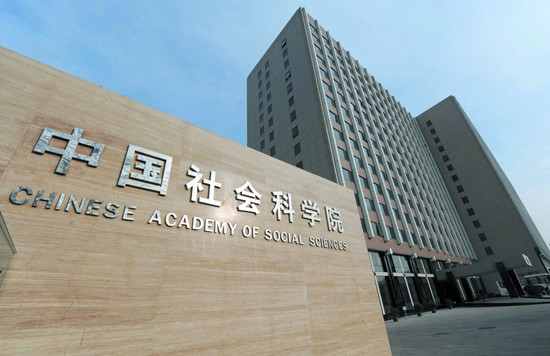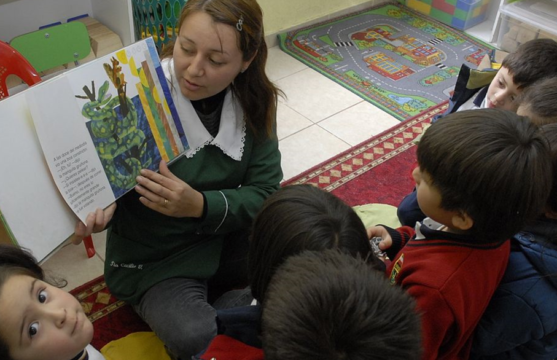
China’s Energy Experts
Who in China is advising on energy engagement with Latin America?
This post is also available in: Spanish
There is clear evidence that the Escuela Nueva (EN) model improves the quality of education. Studies from around the world have shown that EN improves internal efficiency indicators at the school level, as well as student learning levels in both academic and soft skills.[i] As our recent blog post explained, EN not only offers a pedagogical model that allows teachers to cater to different learning needs in the classroom, but also requires the coordinated participation of different stakeholders (teachers, administrators, parents, communities) to make the system work for learning.
Given its effectiveness, one would think education planners would see EN as an attractive option for improving education outcomes and would be interested in implementing the model. In practice, however, it seems that Latin American governments are not taking advantage of the model’s potential benefits. Although several of its characteristics and components have been integrated into different countries’ education programs, the full model has been implemented in only a few cases and—with one or two exceptions—only for a limited time. Why is this the case?
In Latin America, the EN model has been implemented in provinces or states in Guatemala, Nicaragua, Panama, Brazil, Paraguay, Peru, the Dominican Republic, Mexico, and Chile, at different periods in time. In Guatemala, it was implemented at various points, in 12 of the country’s 22 departments, over approximately 15 years. In Colombia, it was implemented as a national policy for over 10 years (officially titled Universalization Plan for Primary Education) and helped Colombia attain almost universal coverage in rural areas, reaching approximately 20,000 schools. In addition, implementation (whether full or of only some components) continues in other Latin American and Caribbean (LAC) countries, as well as in Africa and Asia. Over the last decade, EN was also introduced in Vietnam and, after proving very successful (as a randomized impact evaluation showed), the country has decided that it will be up to each province to keep or abandon the model, but it will not be a mandatory policy of the central government.
As in the case of other innovations, EN has faced numerous challenges. But we know that the model does not suffer from the flaw that causes most projects to fail: poor design. In the LAC context, EN is hindered both by general factors that affect most educational innovations, as well as by challenges specific to EN.
General factors that hinder educational innovations in LAC:
As in other parts of the world, educational innovations in LAC are vulnerable to political and administrative changes. In many countries in the region, education ministers’ tenures have traditionally been short; in some countries the average tenure is about one year, and often new ministers bring in new staff and ideas that question or undo the efforts of their predecessors, even within the same political administration. Additionally, when new initiatives are launched successfully, they are expected to deliver immediate results—which seldom happens, since policy outcomes rarely coincide with political timetables. Furthermore, final decisions are generally made by the most powerful actors in the policy arena, often without adequate information, due in part to weak information management systems and/or the lack of an evidence-based decision-making culture. Finally, another hindrance is the fact that bureaucrats are risk-averse and recognize failures more clearly than successes. When information about results is not provided on time, they prefer the status quo over adopting politically hazardous policy innovations.
Specific factors related to EN may include the following:
i. Incomplete implementation: The EN model has an important teacher training component, but in most countries, this training cycle has not been completed fully, which undoubtedly affects the efficiency of the teachers. Sometimes the student learning guides—another essential component of the EN model—are distributed to students, but not accompanied by adequate training and thus are not correctly utilized. These decisions depend on provincial or local education authorities and their political interests. As an example of this challenge, a recent study from Colombia shows that one reason the model has not achieved better results is because it hasn’t been properly or completely implemented.[ii]
ii. Private interests: In EN, traditional textbooks are used as reference material, and learning materials such as the student learning guides are reusable. Without the need to regularly replace these materials, private textbook suppliers may see the EN model as a threat to their industry and use their influence with the political establishment to weaken support for the model.
iii. Limited national investment: In most countries around the world, EN has been introduced with the encouragement and financial support of external cooperation agencies (USAID, UNICEF, Inter-American Development Bank, World Bank and DFID, among others). Often, if the model is implemented in a number of provinces or municipalities with international aid, authorities do not support the project’s continuation—even when they are pleased with what is being done. One of the best pilots we have seen, Nueva Escuela Unitaria, was implemented in a small number of municipalities in Guatemala, where, despite showing great potential, it was never expanded on a sustainable basis, except with the support of international agencies.
iv. Weak management: Implementing EN requires system capacity at various levels, and in many countries, educational bureaucracies (often at the local level), are technically and operationally weak.
v. Teacher turnover: In many education systems, teachers in rural areas exhibit high mobility and frequently move to urban areas where EN is less commonly implemented. In these cases, departing teachers may be replaced with new instructors who have not been trained in the pedagogy of the EN model.
This evidence suggests that it is not enough to show that an innovation works for governments to choose to adopt it as a policy. In the case of EN, the reasons presented here may explain why it has not been adopted in a sustainable way throughout LAC. Nevertheless, it is equally important to identify the factors that could support its implementation and longevity. For instance, what kind of teacher support is necessary both to guarantee adequate implementation and reduce turnover in rural areas? How can we align the EN model with policymakers’ immediate priorities and interests? Finally, another area to consider is the role of civil society and public-private partnerships. In Colombia, their role has allowed the country to successfully apply the model in some regions for over 30 years. This is illustrated by the support and engagement of the Federation of Coffee Growers in several provinces, the Luker Foundation in the city of Manizales and Fundación Escuela Nueva-Volvamos a la Gente. From these exemplary experiences, we have learned that to be able to reach high coverage, the role of governments, as the main providers of education, is critical, but to ensure sustainability over time and further enhance quality, the participation of civil society and the role of public-private partnerships are necessary. These relationships will be the focus of our next blog post.
Eduardo Velez Bustillo is Adjunct Professor at Georgetown University. Vicky Colbert is the Executive Director of Fundación Escuela Nueva Volvamos a la Gente and recipient of the Wise Prize and the Yidan Prize for Education Development.
[i] See Psacharopoulos, G., C. Rojas and E. Velez. (1993). Achievement Evaluation of Colombia’s Escuela Nueva: Is Multigrade the answer? Comparative Education Review, Vol. 37; USAID. (2010). Evaluation of USAID/Peru’s Education Program: AprenDes and Cett-Andino. Final Evaluation Report. Washington, DC: US Agency for International Development; De Baessa, Y., Chesterfield, R., and Ramos, T. (2002). Active learning and democratic behavior in Guatemalan rural primary schools. Compare: A Journal of Comparative and International Education, 32(2), 205-218.
[ii] See Katharina Hammler, “It’s the Implementation, Stupid! Evidence on Improving Learning Outcomes from the Colombian Escuela Nueva Model,” Flash Paper 1/2018, Policy Crossover Center: Vienna-Europe.
Who in China is advising on energy engagement with Latin America?
Why Pakistan represents “the biggest education reform challenge” and 12 lessons that are applicable to reform efforts around the globe.
An Interview with Manuel A. Alvarez Trongé and Alejandro J. Ganimian on the quality of education in Argentina.

